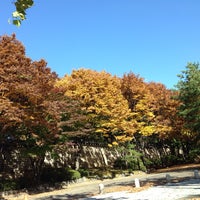See all Things to do in Seoul
Changdeokgung Palace
Jongno-guAbout
This palace was built in 1405, the fifth year of the reign of Joseon King Taejong, as a separate palace adjacent to the main one, Gyeongbokgung. Located to its east, it is also known as Donggwol (the east palace) (while the Gyeongbokgung is the north palace). Changdeokgung was also burned down the same time the main palace was in 1592, during the Japanese invasion. Reconstructed in 1609 to 1611, it served as the seat of royal power for 300 years until Gyeongbokgung was rebuilt at the end of the Joseon Dynasty. Left in disrepair afterwards, the palace was renovated in 1907 and used again by King Sunjong, the country's last king. Although he lost his crown in 1910, Sunjong continued to live here until his death in 1926. His widow, Queen Yun, kept the palace as her home until she died in 1966. The last royal prince died here in 1970 and the last royal family member lived in the palace until her death in 1989. The palace grounds are divided into administrative quarters, residential quarters, and the rear garden. The existing administrative section includes Donghwamun (the front gate and the oldest existing palace structure), Injeongjeon (the throne hall), and Seonjeongjeon (the administrative hall). The residential area includes Huijeondang (the king's bed chamber), the Daejojeon (the queen's bed chamber), the royal kitchen, the infirmary, and other annex buildings. Designated a UNESCO World Heritage site in 1997, Changdeokgung's rear garden has remained a resting area for the royals since the time of King Taejong. Sometimes called Huwon, Bukwon, and Geumwon, King Kojong named it Biwon (or "Secret Garden") and it has kept this name since. Some of the trees in the garden are now over 300 years old and represent the height of Korean garden design and landscaping techniques.
